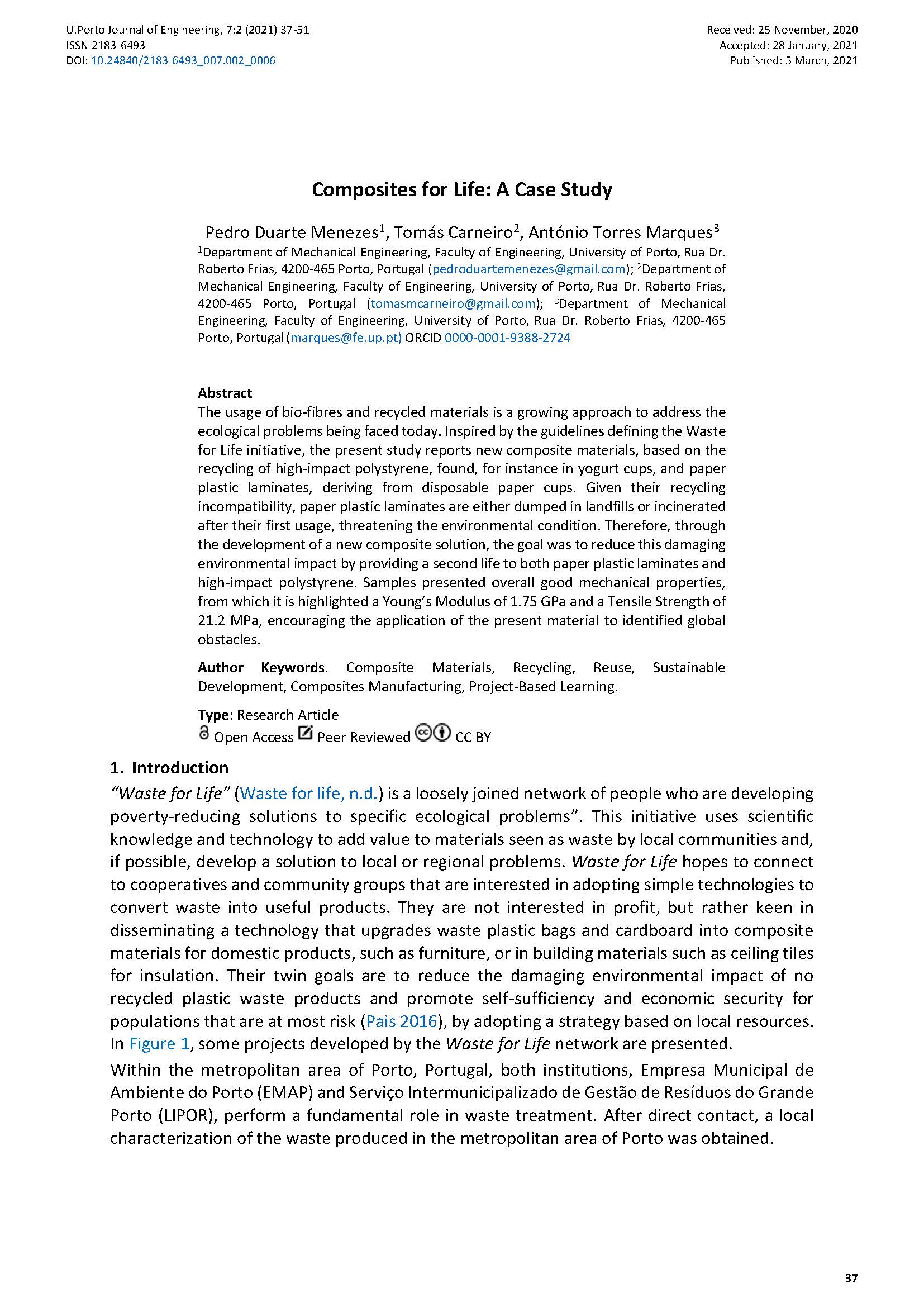Composites for Life A Case Study
Main Article Content
Abstract
The usage of bio-fibres and recycled materials is a growing approach to address the ecological problems being faced today. Inspired by the guidelines defining the Waste for Life initiative, the present study reports new composite materials, based on the recycling of high-impact polystyrene, found, for instance in yogurt cups, and paper plastic laminates, deriving from disposable paper cups. Given their recycling incompatibility, paper plastic laminates are either dumped in landfills or incinerated after their first usage, threatening the environmental condition. Therefore, through the development of a new composite solution, the goal was to reduce this damaging environmental impact by providing a second life to both paper plastic laminates and high-impact polystyrene. Samples presented overall good mechanical properties, from which it is highlighted a Young’s Modulus of 1.75 GPa and a Tensile Strength of 21.2 MPa, encouraging the application of the present material to identified global obstacles.
Downloads
Article Details

This work is licensed under a Creative Commons Attribution 4.0 International License.
Authors who publish with this journal agree to the following terms:
- Authors retain copyright and grant the journal right of first publication with the work simultaneously licensed under a Creative Commons Attribution License that allows others to share the work with an acknowledgement of the work's authorship and initial publication in this journal.
- Authors grant the journal the rights to provide the article in all forms and media so the article can be used on the latest technology even after publication and ensure its long-term preservation.
- Authors are able to enter into separate, additional contractual arrangements for the non-exclusive distribution of the journal's published version of the work (e.g., post it to an institutional repository or publish it in a book), with an acknowledgement of its initial publication in this journal.
- Authors are permitted and encouraged to post their work online (e.g., in institutional repositories or on their website) prior to and during the submission process, as it can lead to productive exchanges, as well as earlier and greater citation of published work (See The Effect of Open Access).

